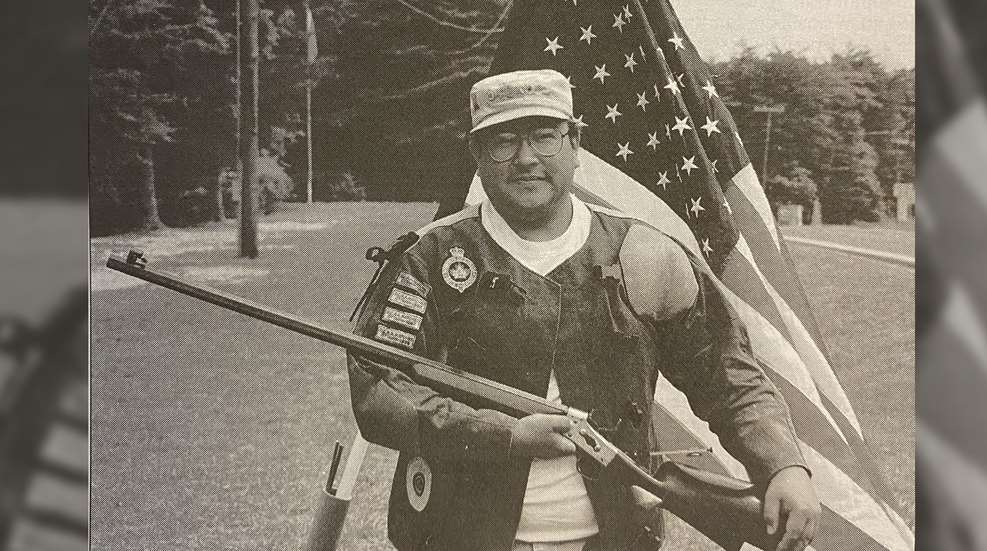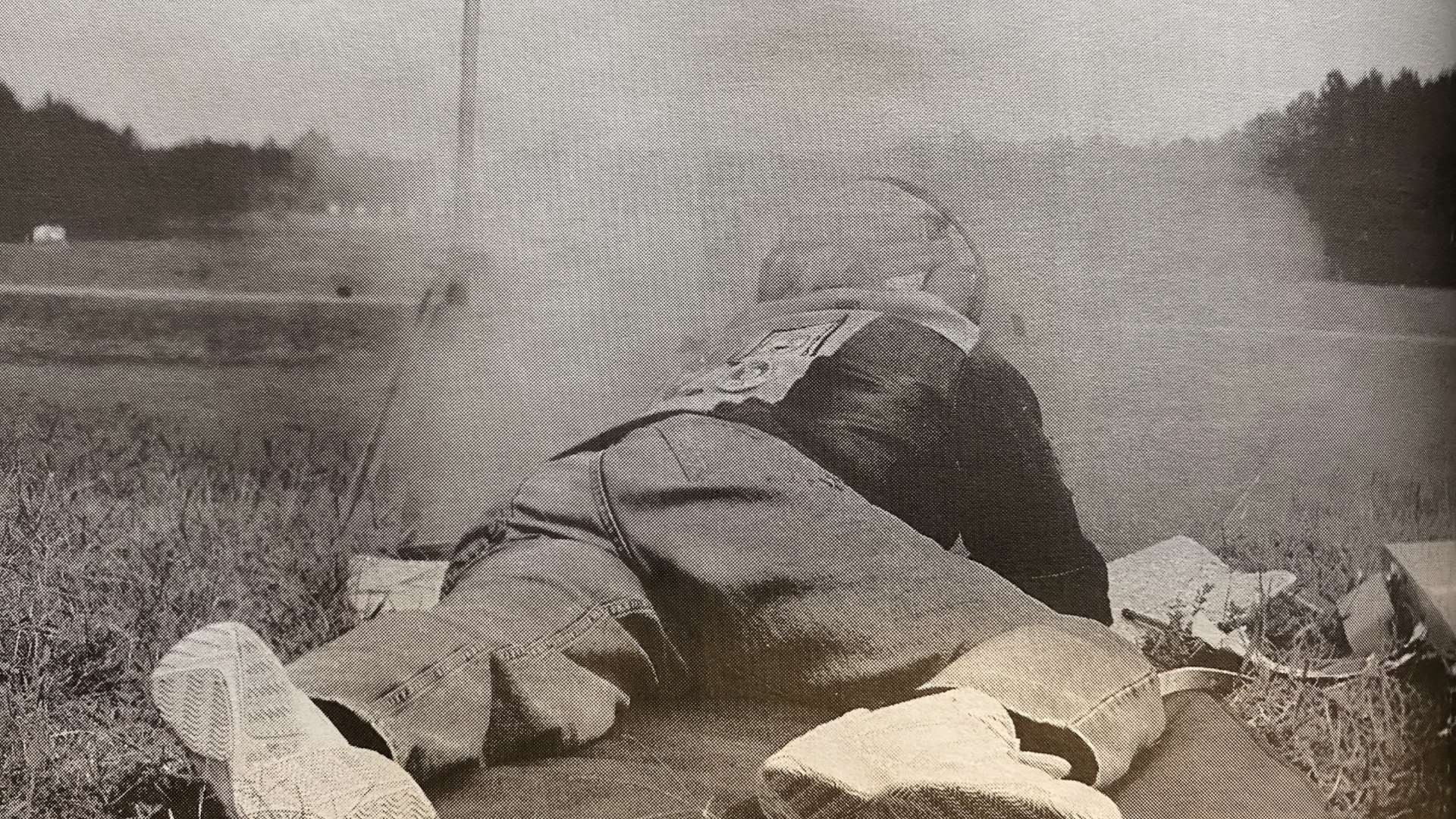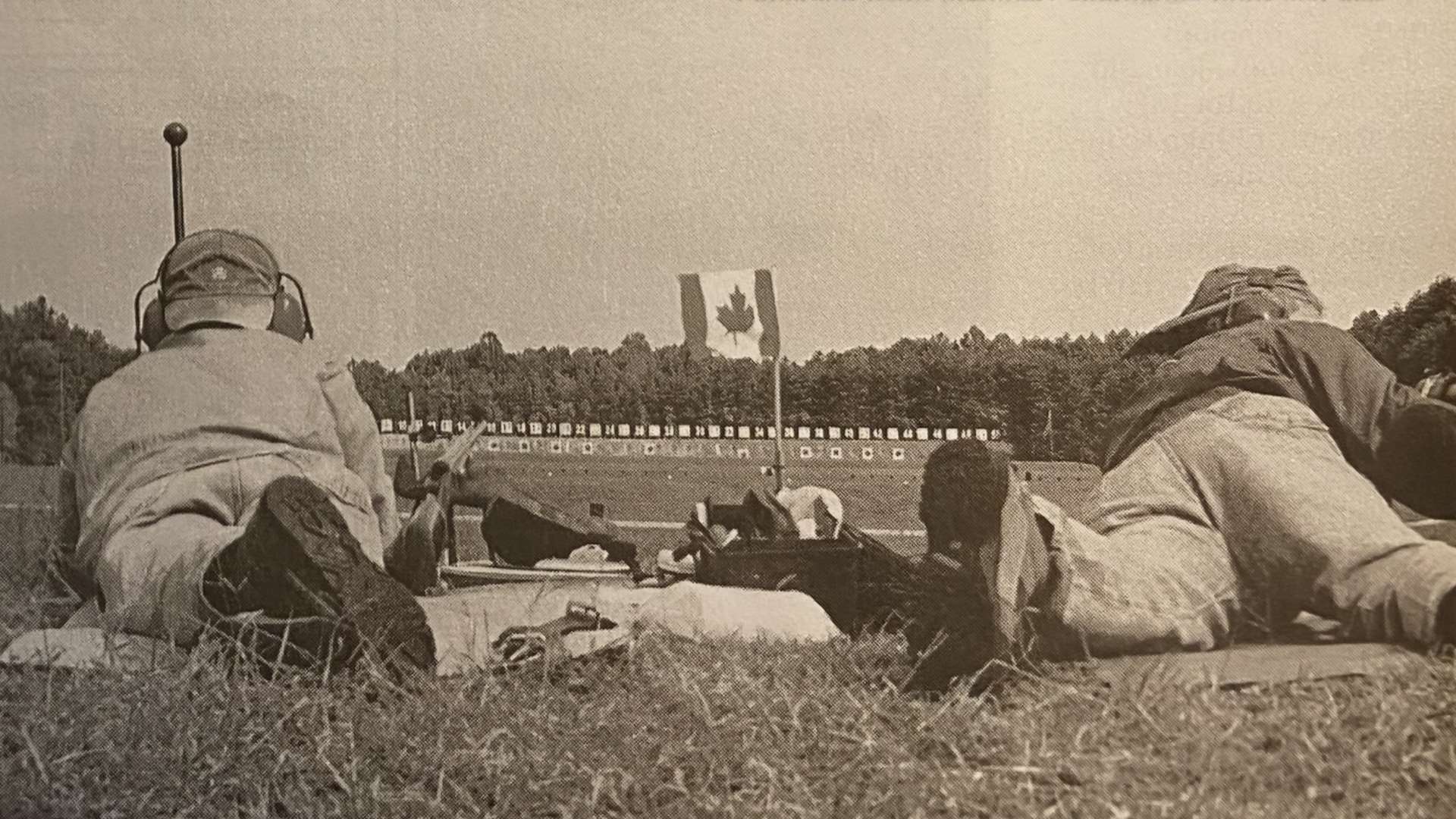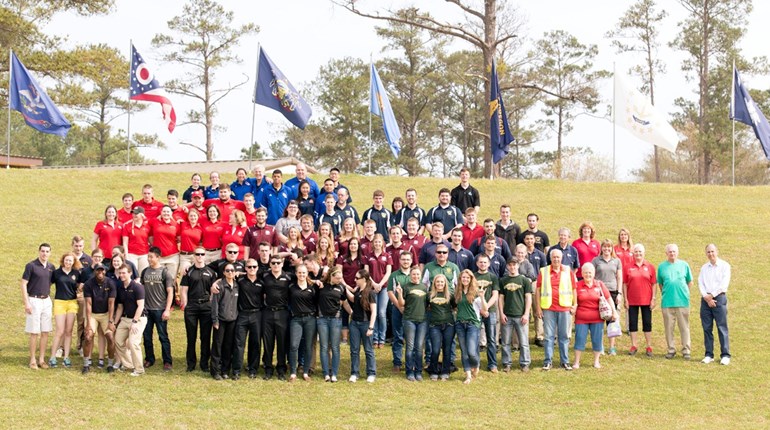
From the vault: Jennifer L.S. Pearsall’s match report from the 1999 World Long-Range Blackpowder Championships. As published in the December 1999 issue of Shooting Sports USA.
U.S. Team Dominates In 1999 World Long-Range Blackpowder Championships
By Jennifer L.S. Pearsall
For only the second time in modern shooting history has there been a world competition for blackpowder enthusiasts. And for the second time in as many years, the United States trounced the world class gathering of Creedmoor-style blackpowder shooters. As a team, the U.S. dominated its nearest competitor by 67 points. Frank Monikowski of the U.S. won the Grand Aggregate Individual Championship, demonstrating some well-honed skills by sweeping both the mid-range and long-range aggregates.
Conducted two years ago in South Africa for the first time since the Irish vs. U.S. Creedmoor matches of 1874, the 1997 World Long Range Blackpowder Championships were won by the American team. That win gave the Americans the opportunity to host the next world gathering. Coinciding with the 125th anniversary of those first Creedmoor matches, the invitation-only 1999 championships were held at the Quantico Marine Corps Base in Virginia, from August 27 through September 2. Sponsored by the American Single Shot Rifle Association and assisted in the match direction by the NRA Competitive Shooting Division, this year’s matches provided stiff international competition between teams and observers from Canada, Germany, South Africa, the United Kingdom, the United States, Australia, New Zealand and Sweden.

The first day of record shooting had competitors contesting the 300- and 600-yard distances. Davis Hicks of the U.S. provided the first individual win, firing a fantastic 98-2X at the 300-yard mark. South African Vince DeSouza with a 97-2X and two other Americans, Monikowski at flat 97 and Dave Gullo with a 97-3X were hot on his heels.
The move to the 600-yard line was to tell the tale for the rest of the individual, and eventually team matches. Monikowski fired a 95-7X at the second post, seven points ahead of his nearest competitor, U.S. teammate Mark McClellan. His win at the 600-yard line gave Monikowski the high mid-range individual aggregate at 192-7X. Mid-range scores of other team members foretold the battle to come between the United States and Germany. Hicks and McClellan stood at 181-3X and 180-2X, respectively, second only to Germany’s Niels Rasmussen-Bonne at 182-1X and Ulrich Kwade at 182-1X. DeSouza took a dip from his strong 300-yard score, posting a 74 at the 600 that put him more than 20 points below the leader.
The long-range events start at 800 yards, move to 900 and then finally to 1,000 (fired over twice) where bullet trajectory peaks match the treeline. Monikowski was steady as a rock through the Creedmoor long-range matches, despite not winning a single match. He posted a 95-4X at the 800 for second place, an 87-1X at the 900 and an 83 for another second high at the 1,000. His long-range aggregate of 265-5X brought home the gold and a new Pedersoli/Sharps sporting rifle. A full three points back in the silver medal position was Canada’s Eri Greer at 262-2X. Combined with his mid-range scores, Monikowski captured the gold medal individual grand aggregate with a score of 457-12X, and with the win came a new Shiloh/Sharps Hartford sporting rifle. Greer went on to score an amazing 87 to win the 1,000-yard individual match. That score helped him to grab the silver in the long-range contest with a 262-2X and the overall individual bronze with an aggregate 431-3X to Rasmussen-Bonne’s silver medal score of 438-4X. Monikowski’s U.S. teammates continued to hold court through the long-range matches, promising a good show in the team events. Jack Stoner captured the 800-yard win with a 96-1X, and Hicks regained his momentum of the 300-yard phase, banging home an 89 for the bronze in the 900.
While his steady hold and consistent scores made things look easy, Monikowski told a different story of life on the line.
“Quantico is a very difficult range to shoot. There are high winds and no mirage,” he said. “Because the range isn’t flat, the wind rolls out of the end corner, and when shooting beyond 600 yards, this factor really has big effect.” The Rhode Island resident estimated the time a gust of wind took to make it from the firing line to the impact zone by timing the difference between the grass movement in front of him and the range flags at distance. His attention to detail comes from his years of almost unlimited long-range practice in El Paso, Texas, where he recently moved from. When conditions don’t allow him live-fire with his Remington Rolling Block No. 5 in .45-70, Monikowski practice at home with an air rifle or an old Bland rifle at 200 yards. “Firing at 200 yards with a .22 is amazingly like firing a big one at 1,000,” Monikowski said. “Trigger control, hold control, breathing, all the basics are extremely important. It’s a good way to practice.”
TEAM MATCHES
The team matches, like the individual, are shot once over the 800- and 900-yard marks, and then twice at 1,000 yards. Up to eight and not less than six-person teams are divided by two into squads. Here, four people fire on a single target (instead of two during the individual matches), and each shooter has an hour to fire 20 record shots.
The fate of the team medals seemed to hang between the United States, German and Canadian teams with some favor initially going to the Americans. Individuals from all three teams scored in the top spots of various individual and aggregate matches, with the U.S. retaining many of the high scores.

The U.S. team polished off the 800-yard phase at 557-13X, 27 points ahead of Germany and 36 ahead of Canada. Monikowski appeared to be leading the way with a 97 individual score. At the 900 the story changed little, with Monikowski again taking the lead, this time with a 90-1X. The U.S. continued to dominate by racking up a 506-4X to Germany’s 469-6X and Canada’s 433-3X. But, what would a team finals be without a little upset?
Perhaps it was a little extra confidence? Possibly it was a tailwind that was on one side of the range. Maybe it was just the “Give ‘em everything we’ve got!” attitude of the Canadian team, because it took to the 1,000-yard line like it definitely had something to prove. The north-of-the-border crew posted a 922-5X, 16 points ahead of the United States and 19 ahead of Germany. One of the team members also posted the top score at the 1,000. Mary Lou DeBruyn showed a bit of “You go girl!” style when she air-expressed her .45 caliber slugs to the target for an aggregate 177-1X. Gullo was her closest competitor at 174-1X. And while it wasn’t enough to change the top three standings, the Canadian team displayed a fortitude that had everyone clapping their backs. At the awards ceremony, the South African coach summed it up by saying, “This is the premier event of its kind because of its camaraderie and the bonds that are formed between competitors.”
The Canadians were selected to host the next World Championships, scheduled for 2001. While the 1997 and 1999 contests were by invitation-only, the 2001 event will be conducted as an all-comers match. You can bet the Canadian team will be practicing a lot between now and then.
GEAR ROUND-UP
The international rules for long-distance blackpowder are slightly different from standard U.S. rules and firing proceeds in ways to accommodate the range facilities. For the individual matches, two competitors fire from one point on one target. They may fire alternating shots or they may tire in strings, and targets are scored via a system of spotters and pasters. Each shooter has one hour to fire up to five sighter shots and 10 shots for record. All firing is done from the prone position and unlike blackpowder silhouette, any manner of equipment, including cross sticks, benchrest devices, shooting jackets and gloves are used—similar in ways to many high power disciplines, but without the “space guns.”
The vast majority of the 1999 world-class blackpowder shooters fired Browning or Winchester 1895s (or similar variations) and Remington Rolling Blocks in .45-70 chamberings. Several Sharps Model 74s and 75s and a few Ruger No. 1s also made an appearance on the line. Some shooters felt the .45-70 doesn't have quite enough push to reliably make it to the paper at the Creedmoor distances. The German team grasped that philosophy more than anyone, with all but one of its team members favoring the larger .45-90 (same caliber, more powder) and the joint-cracking .45-100 (lots more powder). Germany’s Robinson Nitsche almost shot a literal “keg” of powder, firing his .45-120 to much success. Nitsche pulled out the bronze in the individual long-range aggregate and led his team in scores through much of the team matches.
Two muzzleloader shooters are owed much respect for keeping to tradition and “the road less traveled” in competitive blackpowder shooting. Great Britain’s Martin Tebbs chose to use a Gibbs, and Graham Player fired a Whitworth, both firearms chambered in .451. Their concise reloading skills and arrangement of loading paraphernalia were a sight to behold.
TAKE NOTE
It is NRA custom to recognize NRA members when they shoot a new National Record during an International event. Frank Monikowski did just that in the 1999 World Long-Range Blackpowder Championships. Frank shot a Creedmoor record (10 shots each at 800, 900 and 1,000 yards) of 265-5X. That score topped the current record of 258-2X, set earlier this year at the NRA Whittington Center in Raton, New Mexico, by Lannie Moody of Sandpoint, Idaho.


































